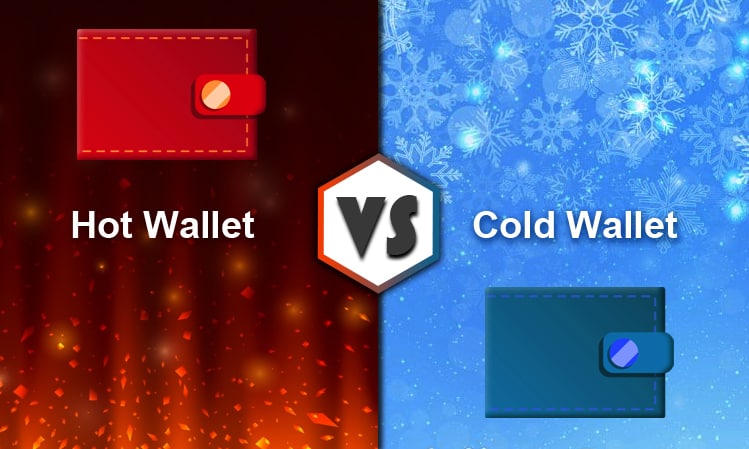With the digital gold rush in full swing, knowing the best practices for crypto wallet security is crucial. Think of your crypto wallet like a treasure chest. Would you leave it unlocked? Of course not! In the same way, I’ll guide you through tightening those virtual padlocks. Whether it’s grasping the nitty-gritty of hot and cold storage, or mastering the arts of multi-factor authentication and key management, I’ve got your back. And when it comes to the inevitable ‘what if’ scenarios, you’ll learn wallet backup and recovery skills to keep your digital coins from sinking into the abyss. Stay sharp against the crafty tricks of phishing and the creeping dangers of malware. Let’s build your fortress and keep those digital doubloons safer than ever.
Understanding the Landscape of Crypto Wallet Security
The Differences Between Hot and Cold Storage
To keep your crypto safe, know how hot and cold storage differ. Hot storage means a wallet is connected to the internet. Think of apps on your phone or computer. It’s handy but comes with risks. Hackers love these as they are easier to attack. Now, cold storage is like a safe. It’s offline, like hardware wallets or paper copies. They are harder for thieves to reach. So, for top safety, use cold storage for most of your crypto. And only keep a little in hot wallets for daily use.
Let’s dive into cold storage safety. Devices like Ledger Nano S or Trezor lock away your crypto. You can even write down your keys on paper. This way, you’re safe from online threats. But, take care not to lose them! Also, make sure your hardware wallet is from a trusted source. And check that no one has messed with it.
Recognizing and Mitigating Hot Wallet Risks
With hot wallets, the danger is real. Bad actors are everywhere, looking to take what’s yours. To fight this, you need to step up your defense. Use strong, unique passwords for starters. And never use the same one on multiple sites or wallets. This keeps your other funds safe if one gets attacked.
Next, let’s talk two-factor authentication or 2FA. It adds a security layer. Even if someone gets your password, without your phone or fingerprint, they can’t get in. Apps like Google Authenticator work great for this. Multi-factor authentication, if available, is even better.
It’s also smart to backup your wallet. If your device breaks or gets lost, your crypto won’t be gone for good. Write down your seed phrases and keep them in a secure place. It’s like having a recovery plan for your digital cash.
There are public and private keys in every wallet. The public one is like your email address—okay to share. The private key is your password. Hide your keys and never give them out. If someone asks, they’re probably trying to scam you.
Always keep your software up to date. This helps block any new ways hackers find to break in. Watch out for phishing emails trying to trick you into giving up your keys. They can look real but don’t fall for it. No legit service will ask for your private keys via email.
Lastly, be aware of where and how you access your wallet. Connect only through safe, known networks. Avoid public Wi-Fi when you’re doing crypto things. Use VPNs to cover your tracks and keep snoopers out. If a wallet ever feels off, like it’s acting funny or something’s weird, trust your gut. Double-check everything. It could be a sign of trouble.
Security isn’t just about fancy tricks. It’s about being smart and careful at every step. Follow these tips and keep doing your homework to stay safe in this digital gold rush.
Advanced Protection Strategies for Cryptocurrency Wallets
Harnessing Multi-Factor and Two-Factor Authentication
When you keep money safe, you need strong locks. Think of multi-factor authentication (MFA) as adding a deadbolt to your wallet’s regular lock. It blends something you know, like a password, with something you have, maybe a text with a code to your phone. This way, even if someone learns your password, they can’t get into your wallet without also having your phone.
Adding two-factor authentication (2FA) is a must. It’s like having a guard double-check who’s trying to enter. Each time you log in, you’ll use your password and a special code that changes often. Even if a bad guy gets your password, they won’t have that code. It’s like that stuff in spy movies, but real and for your wallet.
Encryption and Public/Private Key Management
Your keys are like your wallet’s DNA — totally unique. Public keys are like your home address, safe to share for sending and receiving crypto. Private keys are much more secret — like the key to your safe. If someone gets it, they can steal all your crypto. Guard it like you’d guard treasure.
Encryption keeps your keys in code. It’s like turning your keys into a puzzle only you can solve. If hackers see this puzzle, they can’t do much with it. It’s tough to solve without the right clue, and you’ve got that clue safe in your head.
Good password management helps too. Use tricky passwords, and change them often. Don’t repeat them across sites and wallets. It’s tempting to use your pet’s name, but mix it up. Think ‘Fluffy123’ but with more jazz, like symbols and odd letter combos.
For backup, write down your seed phrase and stash it safe — like a secret map to your crypto. Don’t just hide it on your computer or phone. Paper can’t be hacked, so go old school. It’s like having a backup key for your safe.
Remember, keeping your crypto safe is a big deal. We’re talking about your digital gold, so treat it like you would the real thing. Lock it up tight, keep your keys secret, and never share too much with strangers. With these strategies, you’re building a fortress around your digital riches.
Best Practices for Wallet Backup and Recovery
Step-by-Step Guide to Wallet Backup Procedures
The first rule in securing cryptocurrency wallets is this: always back up your wallet. Think of your digital wallet like a bank vault. Would you have a bank without a backup plan? No. So, here’s what you need to do:
- Find the backup feature in your wallet app. It’s there, I promise.
- Follow the steps to back up your wallet. These steps often involve writing down a recovery phrase.
- Store this recovery phrase somewhere safe. Think of a locked drawer or a safe.
- Double-check that your backup works. You can often do a dry run to test.
Next up, secure your software wallet security. Update it. Just like other apps need updates, so does your wallet. This keeps hackers away. And use a strong password, one with numbers, letters, and symbols. Password management for wallets is key.
Seed Phrase Security and the Wallet Recovery Process
Now let’s talk about the crown jewel: your seed phrase. It’s a list of words that opens your digital money safe. Private key safeguarding is super important. Say it with me: I will protect my seed phrase.
- Write it down. Not on your computer. On paper.
- Make two copies. Again, paper is your friend here.
- Store these copies in different, secure places. Think of places no one would look.
- Never share your seed phrase. Not even with friends.
What if you lose your seed phrase or it gets stolen? Use your wallet backup to regain access. Without your backup or seed phrase, though, you’re out of luck. Think lost treasure. Gone for good.

To keep your cold storage safe, lock it down like Fort Knox. If you’re using a hardware wallet, like a Ledger Nano S or a Trezor, that’s like having your own little vault. Remember to keep it disconnected when not in use. This means hackers can’t touch it.
And hot wallet risks? They are real. Your hot wallet is connected to the internet. So, bad guys have a way in. Here, multi-factor authentication for wallets is your guard dog. Use it. It’s another layer of defense.
Remember, the wallet recovery process is your safety net. But you don’t want to fall. Better to stay secure on the tightrope, with strong encryption for wallet security and avoiding phishing attacks.
Heat up your security. Cool down the risks. And keep your digital gold safe.
Proactive Measures Against Emerging Threats
Evading Phishing Attacks and Malware
To protect your crypto, knowing the latest risks is key. Stay sharp and don’t click links you don’t trust. Phishing can trick you with fake sites. Get your wallet info from the real source only. For software safety, get anti-virus tools. They check your device for bad software that can steal crypto.
Utilizing Wallet Security Enhancements and Decentralized Protocols
For extra wallet safety, add more checks. Use multi-factor authentication. It asks for more than just a password. Think of it like a double door – more secure. Also, write down your seed phrase. It’s your wallet’s backup plan. Keep it safe, like you would with a secret.
Know your wallet type. Hardware wallets, like Ledger Nano S or Trezor, keep keys off the internet. But, be careful where you buy them and keep them in a safe place. For online transactions, consider VPN use to hide your tracks from prying eyes.
Smart contracts can be complex. If you use them, learn how they work to stay safe. Multi-signature wallets need more than one key to open. This is good for team use. It’s like having a safety net.
Remember, security starts with you. Be smart and stay alert. This way, your digital gold stays in the right hands – yours.
To keep your digital money safe, remember these key points. Hot and cold storage each have their own uses and risks. Use both smartly. Up your wallet’s defense with things like two-step checks and keeping your keys secure. Backing up your wallet and saving your seed phrase right is crucial for if things go south.
Stay sharp to beat new cons and bugs. Use fresh security tools and trusty old ways to protect your coins. Remember, in the world of crypto, your security know-how can be the wall that keeps thieves out. Stay safe, stay updated, and keep your virtual coins under lock and key! Follow Crypto Market Pulse to update more knowledge about Crypto.
Q&A :
What are the top recommendations for keeping my crypto wallet secure?
Enhancing the security of your crypto wallet is crucial to safeguard your digital assets. It’s recommended to utilize strong, unique passwords and consider two-factor authentication (2FA) for an added security layer. Regularly updating your wallet software ensures you have the latest security features in place. Moreover, keeping a backup of your wallet keys and storing them in a secure offline location can protect against data loss. Finally, be vigilant against phishing scams and never disclose your private keys.
How can I create a robust password for my crypto wallet?
Creating a strong password is an essential step for securing your crypto wallet. A good practice is to generate a password that includes at least 12 characters, combining uppercase and lowercase letters, numbers, and symbols. Avoid using easily guessable information, such as common words or personal details. Utilizing a reputable password manager can also aid in generating and storing complex passwords securely.
Is two-factor authentication necessary for crypto wallets?
Two-factor authentication (2FA) is highly recommended for crypto wallets as it adds an extra layer of security beyond just a password. When 2FA is enabled, accessing the wallet requires not only the correct password but also a unique code that is typically sent to your mobile device or generated by an authentication application. This secondary verification step significantly reduces the risk of unauthorized access.
Should I keep my crypto wallet software updated?
Yes, keeping your crypto wallet software up to date is critical to ensure your digital assets are protected by the latest security enhancements and bug fixes. Developers regularly release updates to address vulnerabilities and provide new features. Turning on automatic updates where available, or regularly checking for the latest version, is a good practice for maintaining wallet security.
Can I recover my crypto wallet if I lose my keys?
Recovering your crypto wallet after losing your keys can be challenging and is not always possible, which highlights the importance of backup procedures. Before losing access, you should create a secure backup of your private keys or seed phrase. With a backup, you can restore access to your wallet on a new device if needed. Without a backup, the assets in the wallet could be permanently inaccessible. Always store backups in a secure location, separate from where you keep your wallet information.



